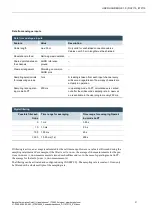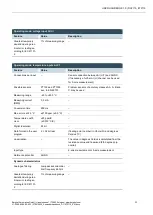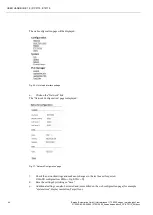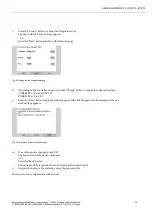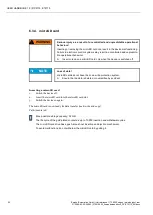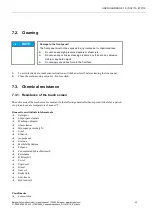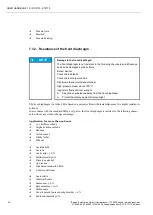
USER HANDBOOK 1.0 | DC2115, ET2115
Berghof Automation GmbH | Harretstrasse 1 | 72800 Eningen | www.berghof.com
21-0099-82-00-00-003 | 270010900_Anwenderhandbuch_DC-ET2115_EN.docx
41
As far as possible, the assignment of the interfaces should be carried out in accordance with the
specifications given in "MODBUS over Serial Line; Specification and Implementation Guide V1.02”.
Signal interference and terminating resistor
To minimise interference, the following instructions must be complied with.
Actively driven bus
An appropriate protocol must be employed to ensure that at all times one of the bus participants is ac-
tively driving the bus.
For a highly symmetrical signal-noise ratio the bus must have defined statuses for logical "1" (A–B < –
0.2 V) and logical "0" (A–B > +0.2 V).
Undriven bus
The bus termination must be as asymmetric as possible to ensure the greatest possible signal-noise ra-
tio (to reduce the symmetrical signal-noise ratio).
In order to achieve the necessary voltage difference between the signals, a suitable resistor network
must be used as the line termination.
The necessary size of the resistors is governed by the bus length and transmission rate (similarly to the
line termination for Profibus, see DIN EN 61158-2).
Connections with GND
To minimise common-mode interference or malfunctions due to potential differences:
Check the topology and line lengths to determine whether additional connection to GND are neces-
sary.
For electrically isolated interfaces with connections to the reference ground at one point: link to GND.
Where necessary, provide an attenuated link to GND (e.g. via 200 Ω) at multiple points.





